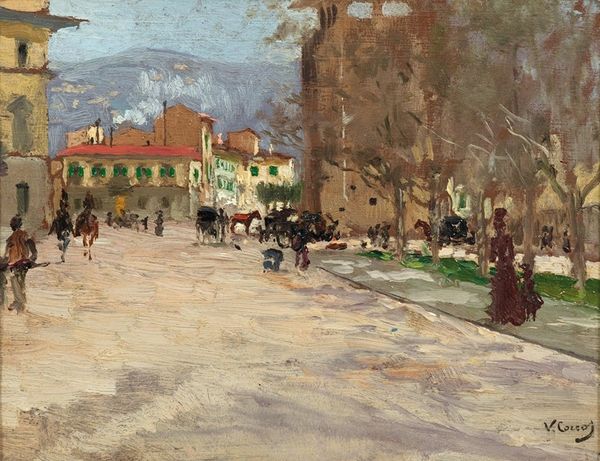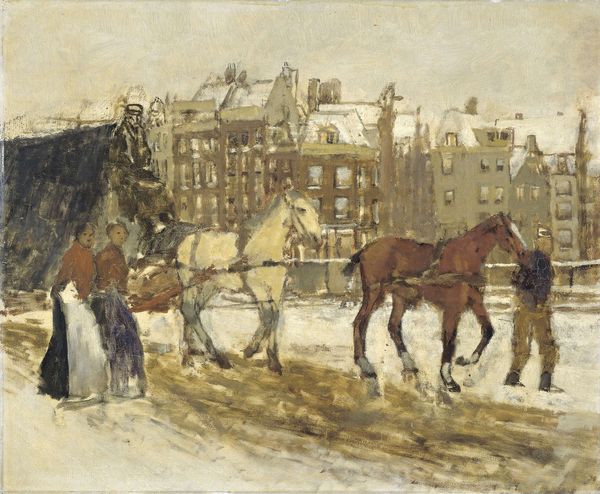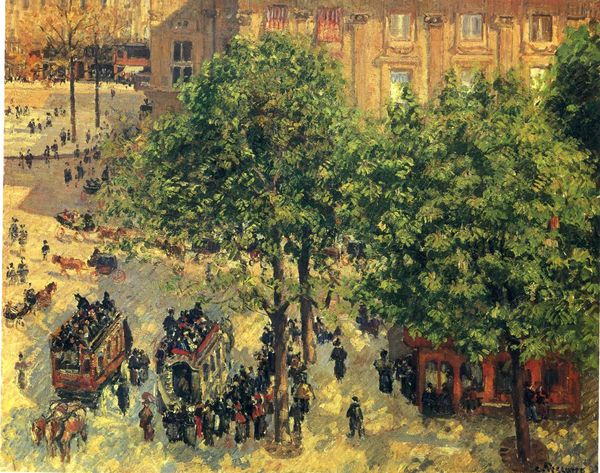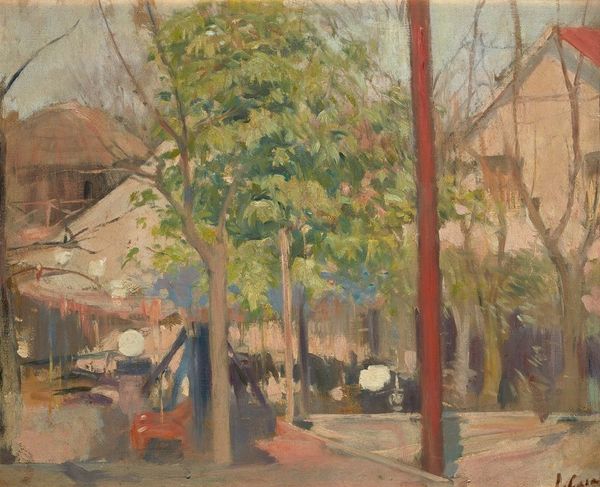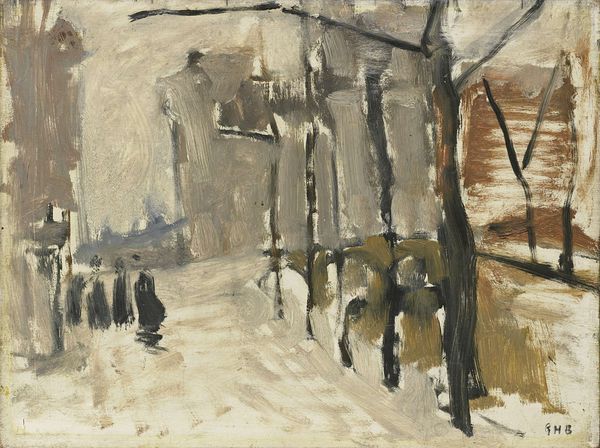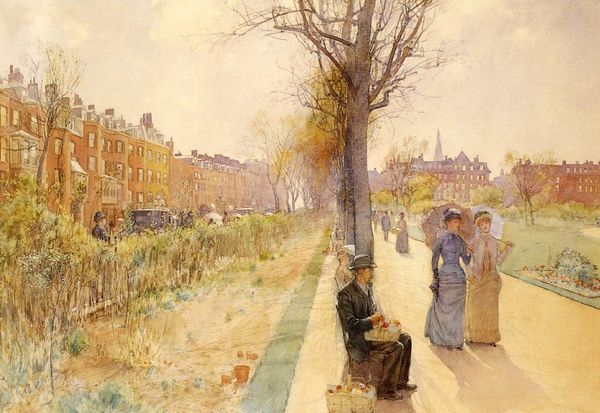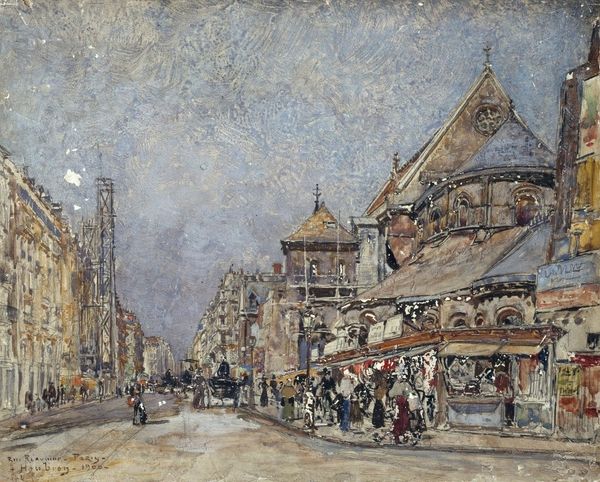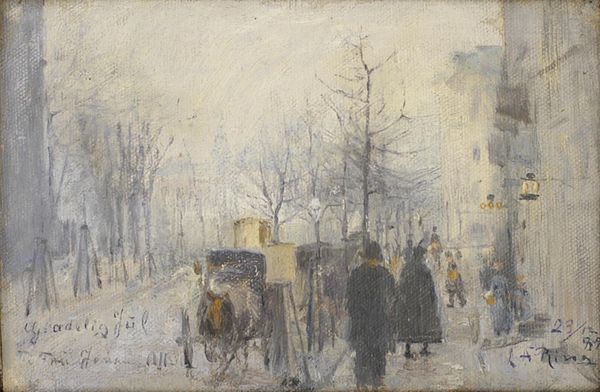
Dimensions: height 33.5 cm, width 40 cm, depth 2.6 cm
Copyright: Rijks Museum: Open Domain
Editor: This is "De Noordermarkt te Amsterdam" by Joannes Westerwoudt, dating from around 1880 to 1906. It looks like it's oil paint, and the style feels like a blend of impressionism and realism. I’m struck by the contrast between the muted colours and the bustling energy of the market scene. What catches your eye in this work? Curator: Well, immediately I'm drawn to the throng of figures, they almost become a single organism. In considering the symbolism, notice how the architecture is relegated to the background while this collective action takes center stage. Could it be about communal activity and the rituals of everyday life overshadowing more permanent structures? What visual cues support that reading, in your opinion? Editor: I see what you mean. The figures definitely dominate the space. And the way the trees are painted – almost like they’re embracing the crowd – adds to that feeling of the market’s importance. Curator: Exactly! It evokes the primal need for gathering, for exchange, and social bonds, even as cities modernized. Consider how the artist uses light—is it focused on specific figures, or dispersed across the collective? How does this choice shape your understanding of the work? Editor: It's diffused, definitely. The light kind of unifies everyone, blurring individual identities in favour of the group. So it emphasizes the community over the individual. Curator: Precisely! It's almost as if the artist is less interested in individual portraits and more in capturing the spirit of a living, breathing entity. I also think of memory; the collective identity of Amsterdam coming to the fore through its symbols of trade. Editor: That makes me think about how markets, even now, carry echoes of the past – traditions and social connections that have continued for centuries. Curator: A wonderful observation. The market as a persistent motif, embedded deeply in our cultural consciousness! Perhaps we can even read into its visual depiction as symbolic for continuity over time, capturing history in fleeting, yet repeatable instances. Editor: I never would have thought of it that way! Now, I see a different image with layers of meaning that tie into collective history and communal life. Thanks so much for your insight.
Comments
No comments
Be the first to comment and join the conversation on the ultimate creative platform.

